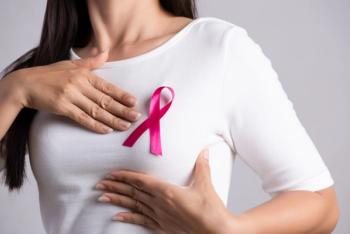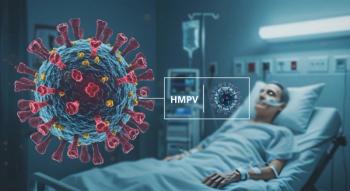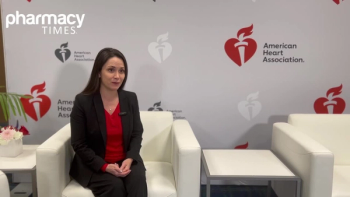
Clinical Overview: Different Options for HIV PrEP Help Prevent Disease Spread
The primary medication therapies that can help with prophylaxis against HIV include pre-exposure prophylaxis and non-occupational post-exposure prophylaxis.
Pre-exposure prophylaxis (PrEP) has been shown to be an effective way to prevent the spread and control of infectious diseases. This is especially true among individuals who do not have HIV but have a high-risk of contracting HIV, which may include those exposed to the virus through sexual contact or injection of drugs.
The US Centers for Disease Control and Prevention (CDC) recommends that PrEP should be considered for individuals who have had anal or vaginal sex in the past 6 months, have not used protection during sex, and/or have been diagnosed with a sexually-transmitted disorder in the past 6 months.1
There are 2 main types of prophylaxis against HIV. Protection toward prevention is the best option to consider; however, the 2 types of medication therapies that can help with prophylaxis include PrEP and non-occupational post-exposure prophylaxis (nPEP).
PrEP is for people who are at high risk of exposure to HIV infection, who should also have tested negative for HIV, hepatitis B and hepatitis C, before receiving the therapy. On the other side, nPEP, is used for people who have been exposed to HIV infection in the past 72 hours and need an emergency protection treatment option. This type of prophylaxis is not intended for regular use by patients and for those who have regular exposure to HIV.4
Two current medications approved by the FDA for use as PrEP include Truvada and Descovy. Each may be a better option for various patients based on their overall health and conditions.
Truvada can be used for people at risk of HIV virus through sex or injection drug use, whereas Descovy can be used for people at risk of virus exposure through sexual activity.2 If these individuals are exposed to HIV, PrEP use will help stop the virus from spreading in the body and causing full-blown disease. For most patients, PrEP should be used every day, to help block the virus.1
Truvada is a combination of emtricitabine and tenofovir disoproxil fumarate, indicated for patients weighing at least 35 kg. The recommended dosage for HIV-1 uninfected adults and adolescents is 1 tablet of Truvada containing 200 mg of emtricitabine and 300 mg of tenofovir, once daily. This medication can be taken with or without food. It is not recommended for patients with CrCl less than 60 ml/min.5
Descovy, a combination of emtricitabine and tenofovir, is indicated for patients weighing at least 35 kg to reduce the risk of HIV infection. The direction for this medication includes taking 1 tablet once daily, with or without food. This medication is also not recommended for patients with CrCl less than 30 ml/min.6
Apretude is another option for PrEP for patients who are at risk of exposure through sexual activity and who weigh at least 77 pounds (35 kg). Apretude, an integrase strand transfer inhibitor, is recommended as a single 600 mg (3 ml) injection administered 1 month apart for 2 consecutive months on the last day of oral lead-in, if used within 3 days and continue with the injection every 2 months thereafter.7
PrEP can help prevent the spread of the virus, especially if effectively taken every day. Per the new data available, routine PrEP use may reduce the risk of HIV spread via sex by 99%, and by 74% from injection drug use. Other additional protective measures against the spread of HIV virus will also help against spread of the HIV virus.2
Although it is considered a safe therapy option, PrEP may cause adverse effects (AEs) such as diarrhea, nausea, headaches, fatigue, and stomach pain, especially in patients taking the medication for the first time. These AEs, if tolerated, go away over time. It should be mentioned that not everyone experiences these AEs and not everyone may experience the same ones.2
An important question to ask every time a patient is prescribed a PrEP is how long it will take for it to work. If used daily, PrEP tablets can reach the maximum protection from HIV at about 7 days. When it comes to vaginal sex, as well as for drug injections, PrEP pills reach maximum protection at about 21 days.2
According to recent data, approximately 1.2 million adults are estimated to have an HIV risk high enough to warrant PrEP use and therapy; however, only approximately 70,000 individuals have actively sought therapy from their providers.
In 2020, an estimated 34,800 new HIV infections were reported in the United States, of which approximately 24,500 (70%) were among gay, bisexual, and other men who have sex with men, approximately 7800 (22%) were among people who reported heterosexual contact, and approximately 2500 (7%), were among individuals who inject drugs.8 This highlights the need for education surrounding PrEP, prophylactic strategies toward HIV prevention, and timely inquiries from health care professionals when it comes to exposure risks to HIV.3
References
- Pre-exposure prophylaxis (PrEP) National Institutes of Health. Available at:
https://hivinfo.nih.gov/understanding-hiv/fact-sheets/pre-exposure-prophylaxis-prep . Accessed June 1, 2023. - About prep (2022) Centers for Disease Control and Prevention. Available at:
https://www.cdc.gov/hiv/basics/prep/about-prep.html . Accessed June 1, 2023. - Beymer MR, Holloway IW, Pulsipher C, Landovitz RJ. Current and Future PrEP Medications and Modalities: On-demand, Injectables, and Topicals. Curr HIV/AIDS Rep. 2019 Aug;16(4):349-358. doi: 10.1007/s11904-019-00450-9. PMID: 31222499; PMCID: PMC6719717. Accessed June 1, 2023.
- CVS Minute clinic. Available at:
https://www.cvs.com/minuteclinic/services/hiv-pre-or-post-exposure-treatment . Accessed June 1, 2023. - What is Truvada®? TRUVADA® (elvitegravir, cobicistat, emtricitabine, tenofovir disoproxil fumarate). Available at:
https://www.truvada.com . Accessed June 1, 2023 - Descovy prescribing information.
Label (fda.gov) . Accessed June 1, 2023. Apretude (cabotegravir) prescribing information. Label (fda.gov) . Accessed June 1, 2023- HIV incidence (2022) Centers for Disease Control and Prevention. Available at:
https://www.cdc.gov/hiv/statistics/overview/in-us/incidence.html . Accessed June 1, 2023.
Newsletter
Stay informed on drug updates, treatment guidelines, and pharmacy practice trends—subscribe to Pharmacy Times for weekly clinical insights.
















































































































































































































